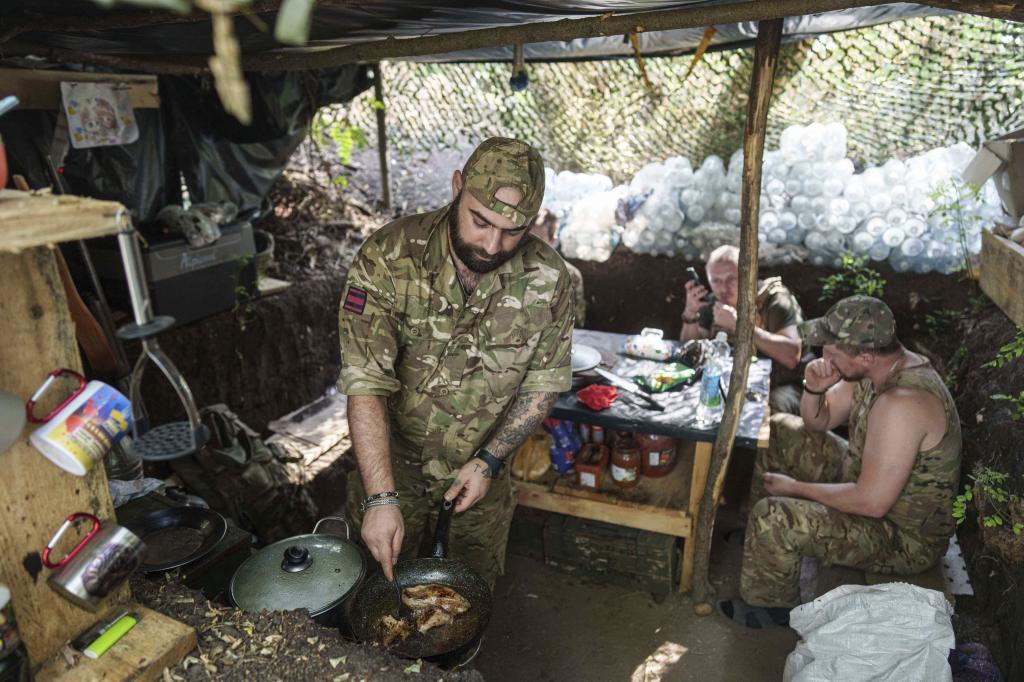If any term can define the current military situation in Ukraine, it is "kill zone" or death zone. It refers to the place where weapons of all calibers, drones, aerial bombs, or mines can kill you. Since the beginning of this invasion, the bloodiest conflict of the century so far, the death zones have only increased.
In the early months of the invasion, what determined the dimensions of these lethal zones was the artillery range of both armies, about 10 kilometers on either side of the front line. But drones have changed the war to a level that can only be compared to what the invention of gunpowder did in the 9th century in China.
Today, there are already drones capable of attacking enemy infantry, armored vehicles, and logistical lines from 40 kilometers away, multiplying the death zones in just over three years. What impact does this robotic presence in the sky have on the war? A significant one. Currently, thousands of quadcopters are flying over all positions, trenches, fortifications, gray areas, and supply lines on both sides of the front line. Moreover, above them fly even more powerful spy drones that, with their powerful eye, can see from a kilometer high if a soldier has shaved that morning. When their batteries run out, another drone takes off and replaces it, even at night, as they have night vision.
In other words, never have armies been so hyper-vigilant, never has the life of the infantry been so miserable, hidden underground even to relieve themselves for weeks without rotation, as leaving exposes them to mortal danger. Even wounded evacuations are done at night and at full speed.
In this context, breakthrough operations, even those carried out with armored vehicles, are detected before they even start and crushed by artillery and drones from a distance before they can fire a single shot. Current technology prevents armies from making significant advances in depth and defenders from collapsing. In other words, offensives in Ukraine have lost their military sense for any force other than the extension of a brutal and dehumanized dictatorship that no longer cares about its own casualties.
War never makes sense, but even less so in these conditions where Russia's operations focus more on terrorizing and punishing civilians in rear cities than on victories on the front. That is why today the key weapon in this effort is the Iranian-origin Shahed drone with a Chinese microchip: it is a slow and predictable device, but so cheap (around 22,000 euros) that it can be launched in swarms to overwhelm Ukrainian defenses. Furthermore, Russian production of this winged terror has increased from about 100 to 500 per day. Its sound, like that of a moped, is reminiscent of the terrible V-1 rockets that the Nazis launched over London in 1944.
Russia has been trying for over a year to surround four cities that only exist on paper: Pokrovsk, Konstantinivka, Siversk, and Kupiansk. In all cases, the operations follow the same pattern: assaults on motorcycles, golf carts, or on foot to try to take and occupy Ukrainian positions. Sometimes Russia needs weeks of waves to conquer a trench occupied by four guys in the middle of nowhere. Until they run out of ammunition and then have to abandon the position in a hurry until the next time. Like a spreading stain, Russia was in Avdivka at the beginning of 2024 and is now at the gates of Pokrovsk, 35 kilometers away. Its propaganda presents it as great victories, when in reality all it shows is its inability to win the war once and for all after almost four years of carnage.
Both armies are exhausted, although for different reasons. Zelenski has not wanted to mobilize those under 25, resulting in his army having an average age between 45 and 50 and enormous difficulties in recruiting. Russia has fewer problems in obtaining manpower but has to offer increasingly higher salaries, and the number of new contracts decreases every month. In 2024, there were about 50,000 monthly. Today, there are about 30,000.
Ukraine receives a continuous trickle of Western military equipment. For many analysts, Europe and the US could do much more in this effort, but the fact is that huge shipments of weapons and ammunition land every week at the border with Poland to then be distributed along the Ukrainian front. As long as this flow continues and the European Union continues to support the Ukrainian state, it will be difficult for the Ukrainian army to collapse. Furthermore, with drone supremacy on the battlefield, the war has become more affordable for Kiev. Most of these devices (60% quadcopters and 100% long-range) are already locally produced.
Russia, on the other hand, is depleting its Soviet reserves from the Cold War, which were huge but not eternal. However, it has the arsenals of North Korea and Iran, loyal allies that, combined with Chinese technology, can meet Russian needs to some extent. Another issue is the true state of the Russian economy, boosted by the war effort but at the same time burdened by the enormous expenditure that is depleting Russian national funds. Any other leader would have long considered stopping the war as a useless instrument. But we are talking about Putin, a resentful and obsessed Putin with the imperial past.
